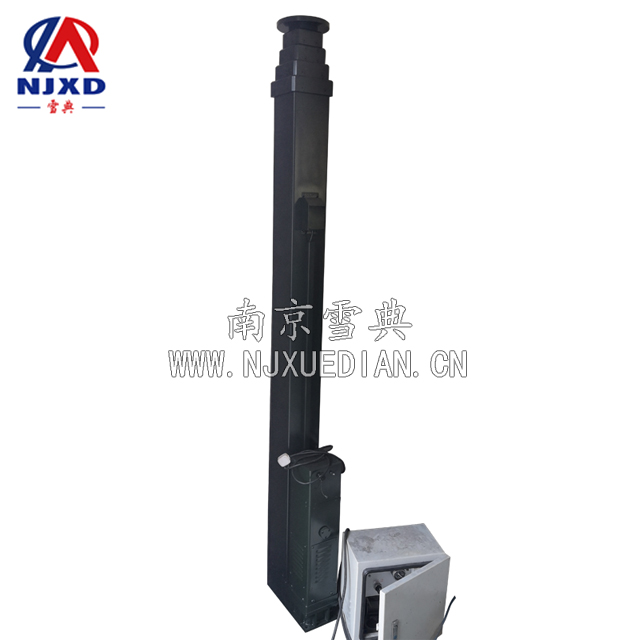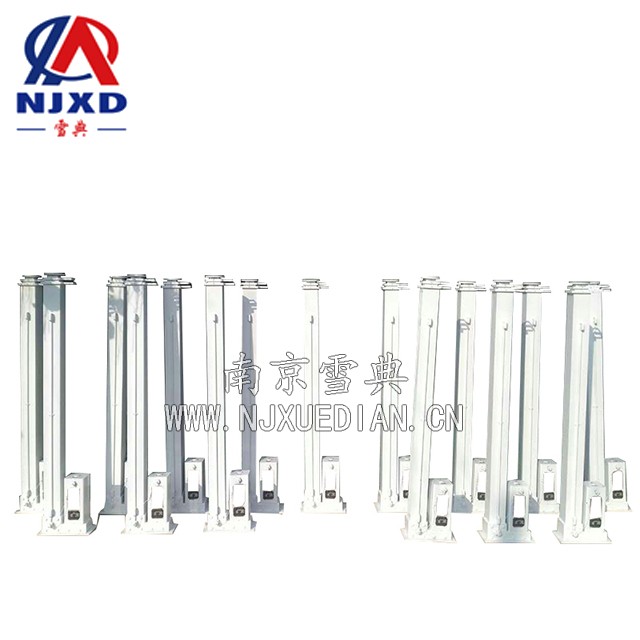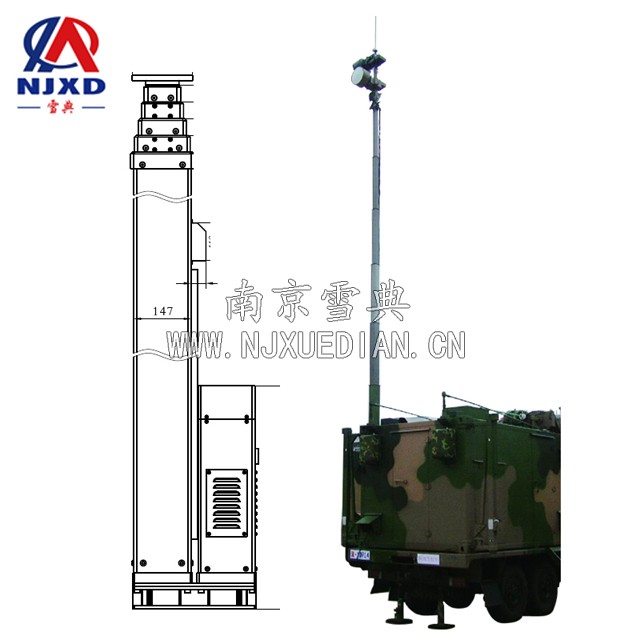NEWS
Main uses and maintenance methods of lift rod drive motor
Time:2021-09-26 View:

Inspection Method
Check method before starting:
1. For new or long-term disabled motors, check the insulation resistance between the winding and the winding to the ground before use. Usually 500V insulating resistance meter is used for motors below 500V; 1000V insulating resistance meter is used for motors above 500-1000V; 2500v insulating resistance meter is used for motors above 1000V. The insulation resistance shall not be less than 1mΩ per kilovolt working voltage and shall be measured in the cooling state of the motor. It can be used in telescopic mast.
2. Check whether the external surface of the motor has cracks, whether the fastening screws and parts are complete, and whether the fixing condition of the motor is good.
3. Check whether the motor transmission mechanism works reliably.
4. According to the data shown on the nameplate, whether the voltage, power, frequency, connection, rotation speed, etc. are consistent with the power supply and load.
5. Check whether the ventilation condition of the motor and the lubrication condition of the bearing are normal.
6. Pull the rotating shaft of the motor to check whether the rotor can rotate freely and there is no noise when rotating.
7. Check the electric brush assembly of the motor, whether the brush lifting mechanism is flexible, and whether the position of the brush lifting handle is correct.
8. Check whether the motor grounding device is reliable.

Industry Standard
GB/T 1993-1993 cooling method for rotating electrical machines
GB 20237-2006 safety requirements for lifting metallurgy and shielded Motors
GB/T 2900.25-2008 Electrotechnical terms rotating motor
GB/T 2900.26-2008 Electrotechnical terms control motor
GB 4831-1984 Motor Product model compilation method
GB 4826-1984 motor power Grade
JB/T 1093-1983 basic test method of traction motor

Main purpose
1. Servo motor
Servo motors are widely used in various control systems, which can convert the input voltage signal into the mechanical output on motor shaft and drag the controlled components to achieve the control purpose.
Servo motors are divided into DC and AC. The earliest servo motors are general DC motors. Only when the control precision is not high can the general DC Motors be used as servo motors. In terms of structure, the current DC servo motor is a low-power DC motor. Its excitation mostly adopts armature control and magnetic field control, but it usually adopts armature control.
2. Stepper motor
Stepper motors are mainly used in the field of CNC machine tool manufacturing. Because stepper motors do not need A/D conversion, they can directly convert digital pulse signals into angular displacement, therefore, it has always been considered as the most ideal executive component of CNC machine tools.
In addition to the application of numerical control machine bed, stepper motor can also be used in other machinery, such as the motor in automatic feeder and the motor of universal floppy disk drive, it can also be applied to printers and graph plotter.
3. Torque motor
Torque motor has the characteristics of low speed and high torque. Generally, ac torque motor is often used in textile industry, and its working principle and structure are the same as those of single-phase asynchronous motor.
4. Switched reluctance motor
Switched reluctance motor is a new type of speed control motor with extremely simple and firm structure, low cost and excellent speed regulation performance. It is a strong competitor of traditional control motor and has strong market potential.
5. Brushless DC motor
Brushless DC Motor has good mechanical characteristics and linear adjustment characteristics, wide speed regulation range, long service life, convenient maintenance and low noise, and does not have a series of problems caused by electric brush, therefore, this kind of motor has great application in the control system.
6. DC motor
DC motor has the advantages of good speed regulation performance, easy starting, and ability to start with load, so the application of DC motor is still very wide at present, especially after the emergence of SCR DC power supply.
7. Asynchronous motor
Asynchronous motor has the advantages of simple structure, convenient manufacture, use and maintenance, reliable operation, small quality and low cost. Asynchronous motors are widely used in driving machine tools, water pumps, blowers, compressors, lifting and hoisting equipment, mining machinery, Light Industry Machinery, agricultural and sideline products processing machinery and other most workers and peasants production machinery as well as household appliances and medical devices.
It is widely used in household appliances, such as electric fans, refrigerators, air conditioners, vacuum cleaners, etc.
8. Synchronous motor
Synchronous motor is mainly used for large machinery, such as blower, water pump, ball mill, compressor, rolling mill and small and micro instruments or as control components. The three-phase synchronous motor is its main body. In addition, it can also be used as phase regulator to deliver inductive or capacitive reactive power to the power grid.

Maintenance method
Professional motor maintenance center motor maintenance process: cleaning stator rotor-replacing carbon brush or other parts-vacuum F-level pressure immersion paint-drying-balancing.
1. The use environment should be kept dry frequently, the motor surface should be kept clean, and the air inlet should not be hindered by dust, fiber, etc.
2. When the thermal protection of the motor occurs continuously, it should be found out whether the fault comes from the motor or overload or the setting value of the protection device is too low. After eliminating the fault, it can be put into operation.
3. Ensure good lubrication of the motor during operation. Generally, the motor runs for about 5000 hours, that is, the grease should be supplemented or replaced. When the bearing is overheated or the lubrication becomes qualitative during operation, the hydraulic pressure should change the grease in time. When replacing grease, old lubricating oil should be removed, and gasoline should be used to clean bearings and bearing lid oil sump, then fill ZL-3 lithium-based grease with 1/2 (to 2 poles) and 2/3 (to 4, 6, 8 poles) of the cavity between the inner and outer rings of the bearing.
4. When the life of the bearing ends, the vibration and noise of motor operation will obviously increase. When the radial clearance of the bearing reaches the following value, the bearing should be replaced.
5. When disassembling the motor, the rotor can be taken out from the shaft extension end or non-extension end. If it is not necessary to remove the fan, it is convenient to take out the rotor from the non-shaft extension end. When pulling out the rotor from the stator, it should prevent damage to the staor winding or insulation.
6. When replacing the winding, you must record the form, size, number of turns, wire gauge, etc. of the original winding. When these data are lost, you should ask the manufacturer for it and change the original design winding at will, it often deteriorates some or several performances of the motor, or even cannot be used.
